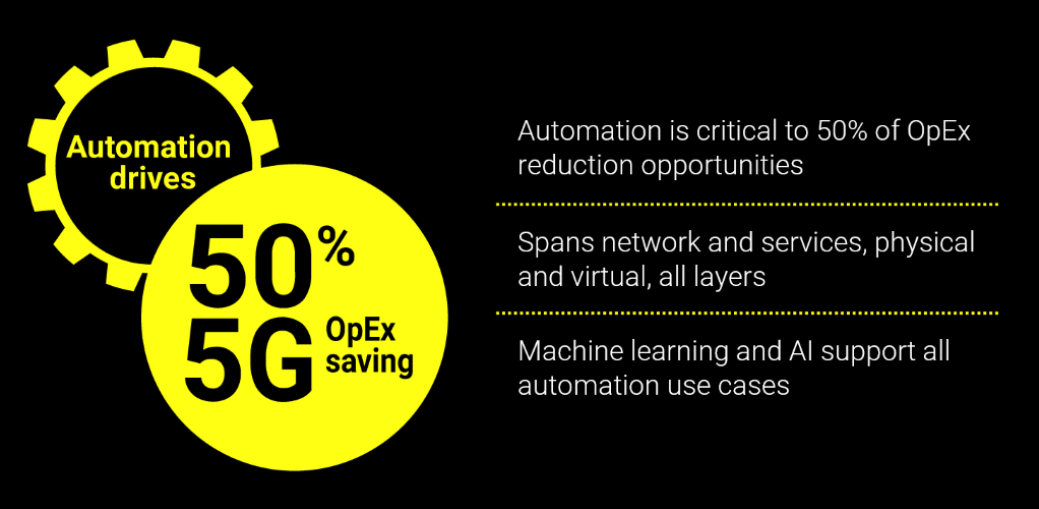It takes more than just automation to save the day for 5G OpEx savings

An often touted fact is that 5G, in scope and complexity, is beyond human control. Which begs the question: if humans won't control 5G, what will?
The stock answer is "automation." Which makes sense, because automation is required to optimize spectral efficiency, control software-defined networks (SDNs), enable active network sharing (aka slicing), and orchestrate services in an agile manner, among other crucial aspects of 5G.
But hidden in this answer is a conundrum.
90% of communications service providers (CSPs) plan to deploy network automation within 18-24 months (source: IHS, November 2019) and 91% say real-time monitoring and analytics are essential to succeed (source: Futuriom, December 2018). But 65% don’t have real time data capture capabilities and 59% are unable to share data between service assurance systems (source: Nokia, May 2019).
Worst of all, less than 3% of service assurance systems support multi-platform automation! (Source: Analysys Mason, December 2019.)
These gaps are a problem, since efficiency, SDN control, slicing, and other aspects of managing 5G depend on multi-layer networks and service states. This will create chaos without machine learning and AI, and a service assurance platform that delivers the right data, at the right time, in context.
Together these components of assurance automation create a powerhouse of short- and long-term benefits. How about: 11% more network capacity, or 37% lower OpEx in 4 years? (Source: Analysys Mason, October 2019.) Or 26% lower customer churn? (Source: Capgemini Digital Transformation Institute, June 2017.) Or 45% less manual processes? (Source: Gartner, February 2019.)
Wow!
CSPs are well-aware of these opportunities and are working rapidly to take advantage of them, even though there certainly isn’t a plethora of options for truly adaptive service assurance that integrates with network orchestrators and other automation frameworks. Necessity is the mother of invention.
After all, customer expectations are rising, and 45% of Net Promotor Score is determined by network performance (source: 3UK, Quotient Consulting, and Ipsos, 2018.) 67% of operations’ time is already spent fixing network and service issues (source: Heavy Reading, August 2019)—influenced by factors like a 69% increase in orchestrated, virtualized networks and services since late 2017 (source: Analysys Mason, October 2019).
Keeping customers satisfied, OpEx under control, and churn from getting out of hand will only get harder, since on average CSPs use six different service assurance systems to troubleshoot (source: Heavy Reading, August 2019), and over the next five years, there will be a 700% increase in network traffic, with machine-to-machine traffic alone doubling (source: TMF, 2018).
Saying that automation will save the day is too broad an answer to be useful in the real world. But, with innovation to create adaptive service assurance using machine learning and AI, CSPs will prevail, achieving significant OpEx savings with 5G and creating a profitable future in a new era.
